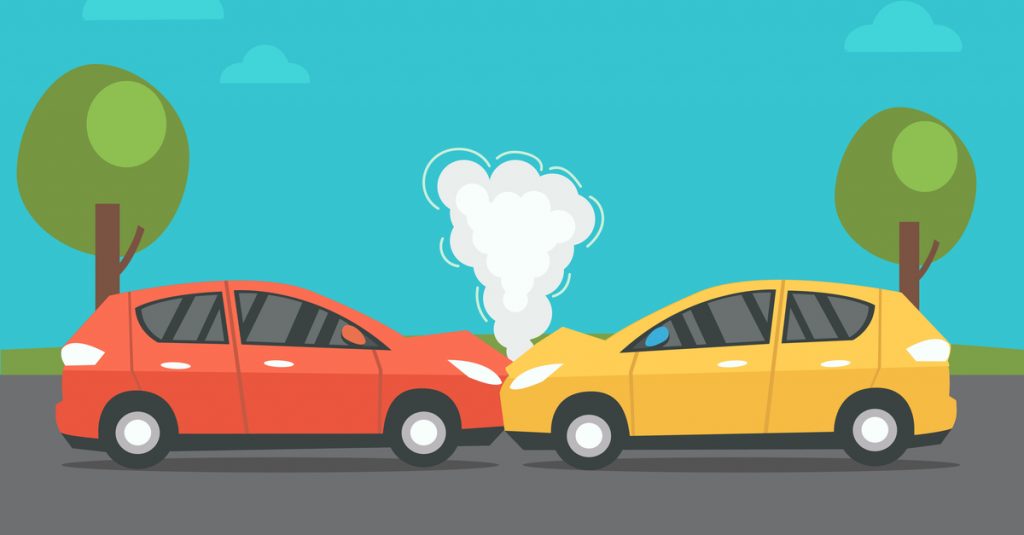As we recognize April as Distracted Driving Awareness Month, it is time to talk about an issue that goes mainly unspoken in mainstream media: the “A” word.
 For the average person, the term “car accident” is synonymous with the phrase “car crash.” We hear about new car “accidents” on the news every day—news stories about how a teenager was killed in a car “accident” by texting and driving or how an intoxicated driver killed a family of four. The media has quit labeling these occurrences for what they really are and instead opts to interchange these two terms for their news stories, a practice that is not only detrimental to the public, but dangerous. Many might not believe that a single word can make that much of a difference, but in fact, it does. So why is this distinction crucial?
For the average person, the term “car accident” is synonymous with the phrase “car crash.” We hear about new car “accidents” on the news every day—news stories about how a teenager was killed in a car “accident” by texting and driving or how an intoxicated driver killed a family of four. The media has quit labeling these occurrences for what they really are and instead opts to interchange these two terms for their news stories, a practice that is not only detrimental to the public, but dangerous. Many might not believe that a single word can make that much of a difference, but in fact, it does. So why is this distinction crucial?
By definition, an “accident” is unintentional. Choosing to get behind the wheel of a car after having too much to drink in not an accident. Opting to text while driving is not an accident. Choosing to send a snapchat on your cell phone while you are driving is not an accident. All of these scenarios depict intentional, purposeful events—events that, according to the U.S. Department of Transportation, led to 3,477 fatalities in 2015, an 8.8 percent increase from the year before.
Emily Stein is one of the biggest proponents of this change in language. She knows first-hand about how terrible the consequences of driving distracted can be—her father was killed by a distracted driver in 2011. After losing her father in a car crash, Stein began working closely with the Safe Roads Alliance, before becoming the President of the organization about a year ago. “The mission [of the Safe Roads Alliance] is simple,” Stein explained. “It is dedicated to saving lives through better driving.”
“Distracted driving is interesting because it involves not only road safety and legislation, but also human behavior, addiction, [and] technology that is advancing so rapidly that the laws cannot keep up,” Stein said. “It is truly a public health concern because it affects people of every demographic—race, class, geographic location, age, education level. No matter when and where you are, you will see drivers who are distracted…most often by their phones.”
“As a society, we tend to be numb when it comes to car crashes—when it’s reported on the news, we don’t let the tragedy sink in…we tend to not first think of how preventable these crashes are,” Stein said. She continued that through “When we hear ‘accident’ over and over again in the media, in our general semantics, it allows us to think ‘Right, these things just happen, it’s part of life.’”
Calling these collisions “an accident” infers that the driver is not at fault for his or her actions. It places the blame elsewhere, on a chance encounter or unlucky timing, which is simply not the case. These drivers made the choice to put not just their lives in danger, but the lives of everyone else on the road around them in danger. And for what? To check an email or post to Facebook?
Stein argues that by switching from “accident” to “crash,” these occurrences can begin to become lessons—lessons on what not to do behind the wheel. She contends that “if every day we heard ‘crash’ instead of ‘accident,’ then… people will take more responsibility, and think about the choices we make when driving. Instead of a shrug of the shoulders and saying ‘it was an accident, oops,’ changing the language to ‘crash’ makes it something that people want to avoid.”
It is time to start assigning blame where blame is due. The media, by labeling these collisions as “accidents” instead of “crashes,” makes the public feel sympathetic for the drivers of the vehicles. These drivers who made intentional decisions to drive while distracted are a danger to themselves and everyone around them. By making the distinction that these occurrences are “crashes,” we are moving one step forward to making the roads a safer space for everyone.





